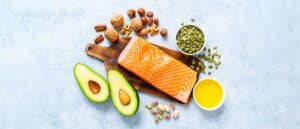Sorry, but No Amount of Exercise Will Save You From That Big Mac
Can’t kick your twice-weekly fast food habit? Old school thinking says you can outrun, or out-exercise, a bad diet, but researchers from the University of Sydney have debunked the old wives’ tale.
A recent study published in the British Journal of Sports Medicine found that high levels of physical activity will not counteract a bad diet, defined as low fruit and vegetable intake, no fish, and plenty of red meat, especially the processed kind. Unsurprisingly, those who stick to high levels of physical activity and a high-quality diet reduced their risk of death from any cause by 17 percent (1).
Healthy Diet + Exercise = Longer Life
The study looked into the effect that diet and exercise had on long-term health and mortality, as compared to previous short-term studies (2). Researchers examined over 360,000 British adults with data collected over 11 years from the UK Biobank and the National Health Service death records.
Led by Melody Ding, Ph.D., an associate professor and epidemiologist at the Sydney School of Public Health, researchers from the Charles Perkins Centre at the University of Sydney looked at the amount of exercise and level of intensity each participant engaged in on an average week and compared it to those following either a high-quality diet (not specified) and a low-quality diet. The focus was on diet quality, a healthy diet of key food groups needed to fulfill daily nutrient needs.
Results show those following a high-quality diet with high levels of physical activity reduce their risk of death from any cause by 17 percent. When compared to those who barely worked out and ate poorly, they were 19 percent less likely to die of heart disease and 27 percent from certain cancers. Researchers determine that diet and exercise work in sync with energy, lipid, glucose, and metabolic homeostatic processes (self-regulating bodily functions necessary for your survival).
While high levels of physical activity won’t counteract a bad diet, those who eat poorly but are active still fare better than their inactive counterparts.
“I was secretly hoping for and expected a slight attenuation of the association between diet and mortality, but I did not find that,” Ding told The Sydney Morning Herald, however, “physical activity always helps, regardless of dietary quality. It is just that diet still matters if someone is very active.”
Diets
This study makes strong points, according to Dot Dumuid, Ph.D., a research fellow at the Alliance for Research in Exercise, Nutrition, and Activity at the University of South Australia with no affiliation to the study.
“It used data from one of the world’s biggest datasets and the results were robust when they repeated the analysis in various ways to avoid certain biases,” Dumuid told The Sydney Morning Herald. “It’s not surprising that the best outcomes were seen among those with a healthy diet and an active lifestyle.”
Key Study Limitation
The study fails to take junk food and soft drink consumption into account, something Dumuid says would be more representative of the participants who engage in vigorous exercise. Fast food data was not available in the massive sample size, according to Ding.
But she wants people to know her study isn’t meant to depress those who struggle with a healthy diet or exercise routine.“Independent of each other, both diet and physical activity are critical to health and longevity,” Ding says. “One should not feel that if they cannot have a healthy diet they should give up on physical activity as well and vice versa. However, if possible, try to do both things right.”

A Growing U.S. Problem
This study resonates with Americans in efforts to fix a growing health crisis of weight-related issues and inactivity. In 2019, only 12.3 percent of U.S. adults met their recommended fruit intake while 10 percent met the recommended veggie intake, according to a CDC study. New guidelines say adults should consume 1.5 to 2 cups of fruit and 2 to 3 cups of vegetables daily.
As for exercise, 1 in 5 adults in all but four states (Washington, Utah, Colorado, and Vermont) are inactive, according to a 2022 CDC press release. Inactivity is defined as no physical activity (running, walking, gardening, etc.) outside of work.
“Getting enough physical activity could prevent 1 in 10 premature deaths,” says Ruth Peterson, MD, Director of CDC’s Division of Nutrition, Physical Activity, and Obesity, per the press release. “Too many people are missing out on the health benefits of physical activity such as improved sleep, reduced blood pressure and anxiety, lowered risk for heart disease, several cancers, and dementia (including Alzheimer’s disease).”
References
1. Ding, D.; et al. (2022). Physical activity, diet quality and all-cause cardiovascular disease and cancer mortality: a prospective study of 346 627 UK Biobank participants.
2. Walhin, J.; et al. (2013). Exercise counteracts the effects of short-term overfeeding and reduced physical activity independent of energy imbalance in healthy young men.












